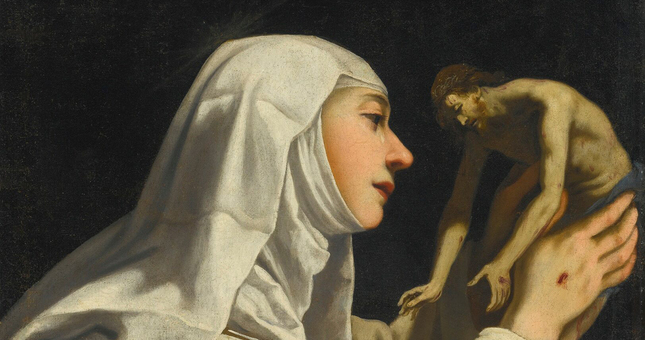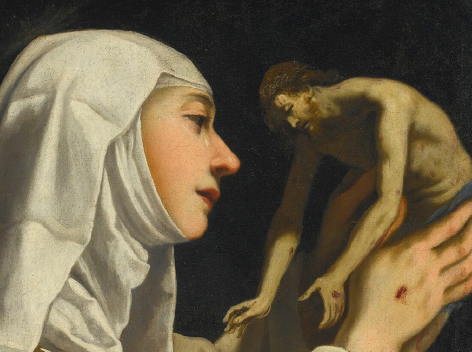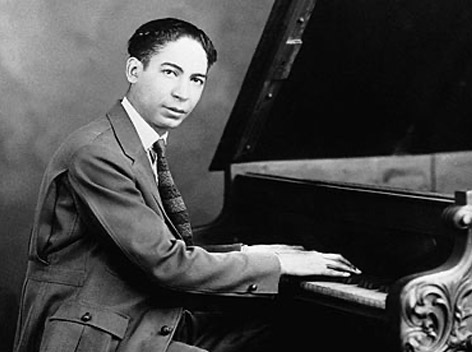
Bodily Love: Catherine of Siena on Loving Our Neighbours in Troubled Times
From the Bubonic Plague to COVID-19, All Good Works Involve Both Body and Soul
I have been thinking a lot about Catherine of Siena (1347–80) lately.
This is in part because I taught Catherine earlier this term in my course “Women’s Theological Writing” and I’ve been returning to her in my class throughout the term. In part also because my sister and I were planning a May holiday to an eighteenth-century Tuscan villa just outside of Siena. (Admittedly I was more excited than my sister to follow in Catherine’s footsteps.) This trip is sadly cancelled.
And now, as our world is being turned upside down by the COVID-19 pandemic—as bodies are ravaged, as death counts climb, as healthcare systems are overwhelmed—I’ve been thinking of Catherine more than ever. Catherine is one of only four women throughout Christian history to have been declared a doctor of the Catholic church on account of her extraordinary contributions to theology, and her voice is compelling, worth repeated reflection, and still worth listening to today. “Follow the way courageously,” she wrote, “not in the fog but with the light of faith” (Dialogue 29).
Catherine of Siena was born Caterina di Giacomo di Benincasa on March 25, 1347, at the tail end of the golden age of Siena, a city in Tuscany. At the time Siena had a population of about 50,000 people and was nearly bursting at the seams. Six times during the medieval period—including twice in the two dozen years prior to Catherine’s birth—Siena’s walls had to be extended to enclose larger areas. At the time, Siena was a centre for banking and cloth-making; it attracted artists, architects, and pilgrims on the Via Francigena, which in the medieval period was a popular pilgrimage route that stretched from France (or some say England) to Rome.
In the year following Catherine’s birth, Siena was hit hard by the most ruinous pandemic the world has yet seen: the bubonic plague, or so-called Black Death, that devastated Europe during the fourteenth century. Brought by trading ships from Crimea, the plague ravaged all of Italy, and spread from there throughout Europe. Victims developed headaches, nausea, fever, vomiting of blood, and tumors in their armpits, groins, and necks. These tumors oozed pus and bled when opened. The plague’s cause was unknown, and there was no cure. Death rates are difficult to determine at this distance, but many historians believe that Siena lost 60% of its inhabitants: 50,000 people were quickly and excruciatingly reduced to 20,000 people. As the plague swept through Europe during the period 1346–53, it killed as many as 50 million people, a full 60% of Europe’s population. At the time, the Sienese chronicler Agnolo di Tura wrote:
The mortality began in Siena in May 1348. It was a cruel and horrible thing. I do not know where to begin to tell of the cruelty and pitiless ways. It seemed to almost everyone that one became stupified by seeing the pain. Victims died almost at once. People would swell up in their armpits and their groins. Father abandoned child, wife husband, brother sister. No one could be found to bury the dead. Great pits were dug in Siena and were piled deep with the dead. They died by the hundreds day and night. I, Agnolo di Tura, called the Fat, buried my five children with my own hands…. And so many died that all believed it was the end of the world.
The plague burst out again in 1374, when Catherine was 27 years old. While Agnolo described the shock and paralysis that characterized people’s response to the plague’s earlier outbreak, Catherine now stepped into the dangerous situation to tend to the sick and dying. Her theology is one of radical neighbourly love. Rather than attempt to transcend the body in her intellectual quest, to privilege the soul over the body and form over matter, for Catherine the body was the primary locus of revelation and meaning. Bodies ooze, bleed, burn, and weep in the pages of Catherine’s masterpiece, The Dialogue.
When Catherine was 18 she joined the Mantellate, an order of women who were affiliated with the Order of Saint Dominic (or Order of Preachers) and wore the black and white habit but lived in their own homes, serving the needs of the poor and the sick. Dominican influence in her life was to be expected. Her family lived just down the hill from the church and cloister of San Domenico, a centre of Dominican learning and preaching, and Catherine was there often—too often and too long to suit her mother and father.
After becoming a Dominican tertiary Catherine began to live in solitude and silence in a small room (or “cell”) in the family home and remained there for three years, going out only for Mass at San Domenico. In her cell, Catherine dedicated herself to penance and prayer and received many visions.
At the end of three years she sensed the imperative to rejoin her family and give herself to the service of the poor and the sick with her sisters of the Mantellate. She was 21. She served as a nurse in homes and hospitals, looked out for the destitute, and buried her father. She did this unwillingly at first, believing such activity would take her away from God, but instead found with great delight that loving her neighbours brought her closer to God. We can see this in the Dialogue, in which she hears God saying, “When the two—that is love for me and love for your neighbour—are gathered together…you find that I am your companion, and I am your strength and security” (Dialogue 54). Catherine cared for the sick and elderly, at times performing tasks so awful she nearly vomited. But when she drew back she heard a voice telling her not to detest Christ in her neighbour, and she quickly re-embraced the work.
Her sudden shift from her cell to the world outside did not end the silence and contemplation she still found in solitude. Christ’s glorious body, on which Catherine contemplated, continuously animated her physical body in its service to others, until gradually the two became synchronized in a harmony of praise. God told Catherine of a move “from the knowledge of me to the knowledge of oneself, from love of me to love of one’s neighbours” (Dialogue 11). Catherine collapsed any hierarchy between loving God and neighbour, insisting there was no possibility of loving and serving God except by way of the neighbour and through the involvement of the body. God told her, “Every action, whether good or evil, is done by means of the body” (Dialogue 86), and this is why the body shares in the eternal joy or torment of the soul. She heard God say, “love of me and love of neighbour are one and the same thing: Since love of neighbour has its source in me, the more the soul loves me, the more she loves her neighbours” (Dialogue 86).
But Catherine went further, repudiating those who privileged their spiritual needs and obligations over the needs of their neighbours. God complained to her about those who ignored their neighbours’ needs in order to pray, for in such an attachment to prayer there is a subtle form of selfishness:
They are deceived by their own spiritual pleasure, and they offend me more by not coming to the help of their neighbours’ need than if they had abandoned all their consolations. For I have ordained every exercise of vocal and mental prayer to bring souls to perfect love for me and their neighbours, and to keep them in this love. So they offend me more by abandoning charity for their neighbour for a particular exercise or for spiritual quiet than if they had abandoned the exercise for their neighbour (Dialogue 131).
If we consider carefully what Catherine is saying here, we begin to see the depths of her psychological insight. Her ethos of neighbourly love anticipates and addresses Freud’s fear of the latent masochistic and sadistic tendencies in the commandment to love the neighbour as the self. That is why any attempt to separate Catherine’s social ethos from her spiritual life fails—because for her the two continuously animate and inspire one another. There is no lack in Catherine’s soul, if by that we mean the echoing emptiness of the modern soul against the empty horizons of the infinite. Catherine’s life is not that of the solitary, individual lost within an unspeakable abyss and reaching out to the other with an insatiable desire to love and be loved. For Catherine, neighbourly love comes from the unsayable plenitude of the incarnate love of Christ, which overflows all the finite boundaries of her mortal, bodily self.
Just as the soul in rapture experiences union with Christ, so the body in its mundane activities expresses the overflowing abundance of that union as love of neighbour. Catherine’s theology begins and ends in the body not just of the other but, paradoxically, as the other. In other words, Catherine considered her bodily self to be the neighbour of her soul. God told her, “I would have you know that every virtue of yours and every vice is put into action by means of your neighbours. If you hate me, you harm your neighbours and yourself as well (for you are your chief neighbour)” (Dialogue 34). There is no possibility of separating spirituality and materiality, prayer and ethics, body and God, in Catherine’s theology.
What about us, on this day in March 2020, here in Vancouver or wherever you happen to be, as the COVID-19 pandemic unites and separates us all? If Catherine’s social ethos cannot be separated from her spiritual life, neither can nor should ours. But Catherine rushed into the streets to care for the bodies of her neighbours, and we must stay home, stand apart. We are robbed of hugs, of holding hands, of the healing provided in affective touch. How can we show radical neighbourly love in our cultural moment, with our ensouled bodies?
We can begin by remembering that we are both soul and body, and that each precious life in our global community is both soul and body. We carry our bodies into our isolation and they require care: healthful food, exercise, deep breaths of fresh air, rest. Our bodies can still kneel in prayer though we cannot go to church, our arms still rise in praise because God remembers each of us, even now. When we emerge from our own small cells to purchase food or fill prescriptions we can remember that each person who continues to work to provide for our needs is both soul and body. Rather than encounter our neighbours as threats to our safety, suspicious just for being on the street, we can see them as souls and bodies, carrying weighty burdens of their own. For the time being we must keep our distance, but we can still look another in the eyes and smile.
And we can remember that the God who knit us together, body and soul, is the God who was present in fourteenth-century Italy as plague swept mercilessly through Siena’s narrow streets, and the same God is present even now as we look out our windows onto newly quiet streets and pray for relief from this new virus.
If you want another timely read from one of Regent's historians, you might enjoy Bruce Hindmarsh's article on Christianity's response to pandemics throughout the ages, "Coronavirus and the Communion of the Saints."



